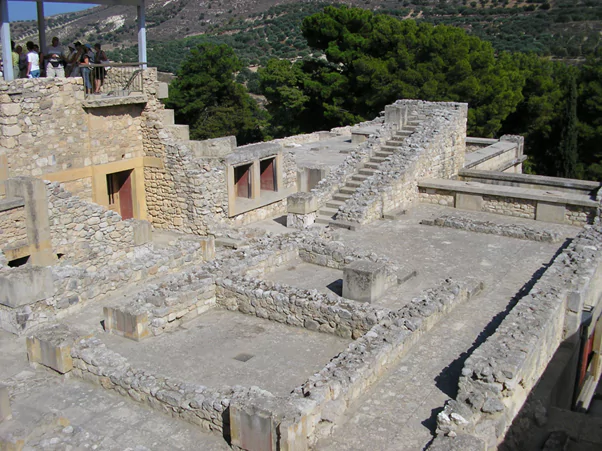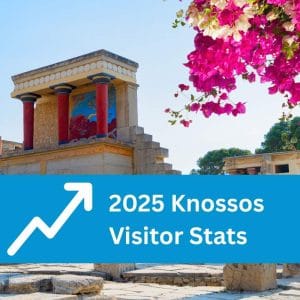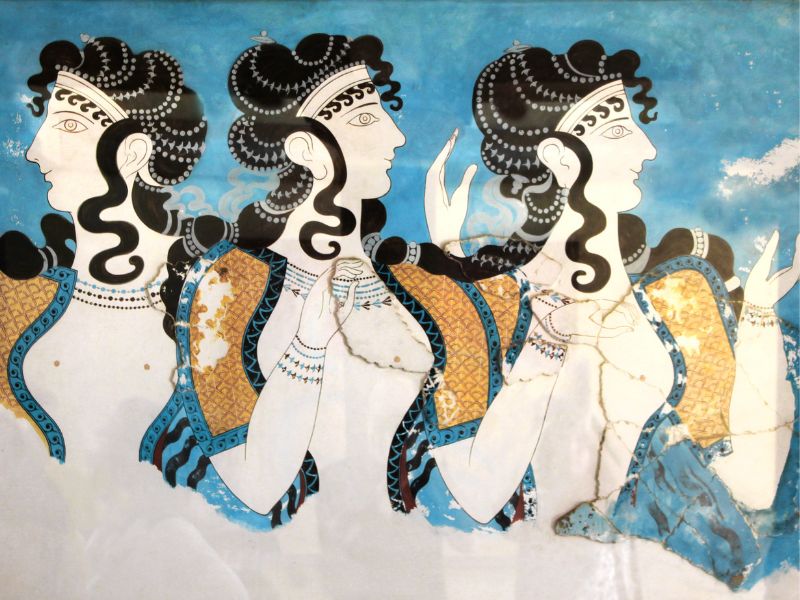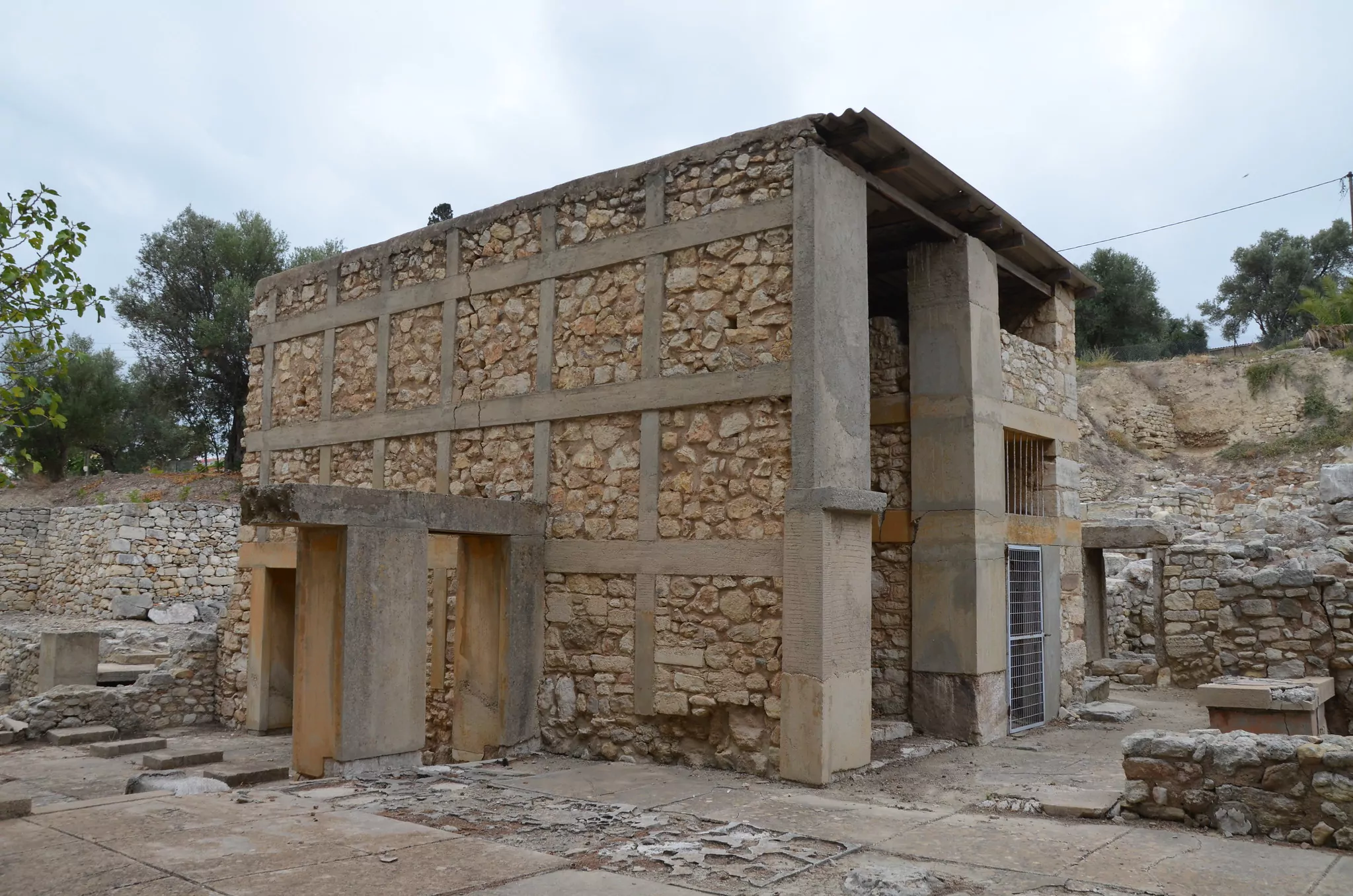
The East Wing in Knossos Archaeological Site
Knossos Archaeological Site in Crete, Greece, is one of the most important and well-known sites of the Minoan civilization that flourished during the Bronze Age. The site is home to numerous structures, including the iconic East Wing, which was once the heart of the palace. The East Wing is an extraordinary architectural marvel and has fascinated scholars, archaeologists, and tourists alike for centuries. In this blog post, we will explore the history and significance of the East Wing, its architecture, and the various challenges involved in its preservation. This blog is intended for international tourists who want to learn more about the fascinating history and significance of the East Wing in Knossos.
Table of Contents
History of the East Wing
The East Wing was built during the First Palace period (1900-1700 BC) and was later remodeled during the New Palace period (1700-1450 BC). It was the central part of the palace complex and housed some of the most important administrative and ceremonial rooms of the Minoans.
The “Grand Staircase”
The “Grand Staircase” is one of the most impressive architectural features of the East Wing. It is an elaborate staircase that has been reconstructed based on the surviving architectural elements. The unique design of the staircase is believed to have been influenced by the Minoan belief in the sacredness of spirals.
Rooms within the East Wing
The East Wing was a vast structure made up of numerous rooms, including residential and administrative rooms, storage and food preparation areas, luxurious reception halls, and shrines.
The different rooms served different purposes and provided insights into the daily lives and rituals of the Minoans. The treasuries in the East Wing were also of great significance, as they contained valuable objects and artifacts, representing the wealth and power of the Minoan civilization.
Challenges and Preservation
The East Wing has faced numerous challenges over the years, including earthquakes, fires, and wars, which led to its partial destruction. In recent times, the East Wing has also faced challenges during its excavation and preservation due to its sheer scale and complexity. However, the team of archaeologists and conservators working at the site has managed to overcome most of these challenges and has successfully preserved the East Wing for future generations.
Significance of the East Wing
The East Wing played a vital role in Minoan civilization and was the center of the culture and politics of the island. Its magnificent architecture, sophisticated decorations, and advanced engineering techniques are a testament to the skill and creativity of the Minoans. The East Wing provides invaluable insights into the lives, customs, and beliefs of this ancient civilization, and has greatly contributed to our understanding of the Bronze Age.
Final thoughts and reflections
The East Wing of Knossos Archaeological Site is a testament to the power and creativity of the Minoan civilization. It is a must-visit destination for anyone interested in ancient history and architecture. The East Wing has faced numerous challenges over the years, but the dedication and hard work of archaeologists and conservators have succeeded in preserving this magnificent monument for future generations. A visit to the East Wing is an opportunity to explore the history, legacy, and cultural treasures of the Minoan civilization, and to catch a glimpse of the brilliance of ancient engineering and architecture.
Conclusion
In conclusion, the East Wing of Knossos Archaeological Site is a marvel of ancient engineering, art, and culture. It is a symbol of the rich history and legacy of the Minoan civilization and the extraordinary architectural prowess of the Bronze Age. Despite the many challenges involved in its preservation, the East Wing stands today as a magnificent monument to the ingenuity and creativity of humanity. A visit to the East Wing is a must for any history buff or anyone interested in the fascinating history of Minoan civilization.
Sources – Further Research
- McEnrone, J. (2010). Architecture of Minoan Crete. University of Texas Press.
- Jarus, O. (2017). Knossos: Palace of the Minoans. https://www.livescience.com/27955-knossos-palace-of-the-minoans.html
- German, S. (2020). Knossos. https://www.khanacademy.org/humanities/ancient-art-civilizations/aegean-art1/minoan/a/knossos
- Ephorate of Antiquities of Heraklion – Knossos Scientific Committee. (2015). Knossos Documenta. https://knossosdocumenta.gr/en/the-palace-of-knossos/
- Gibson, G., Morden, M., Rowbotham, W. (2017). Odyssey Adventures in Archeology. https://www.odysseyadventures.ca/articles/knossos/articleKnossos03.approach.html









